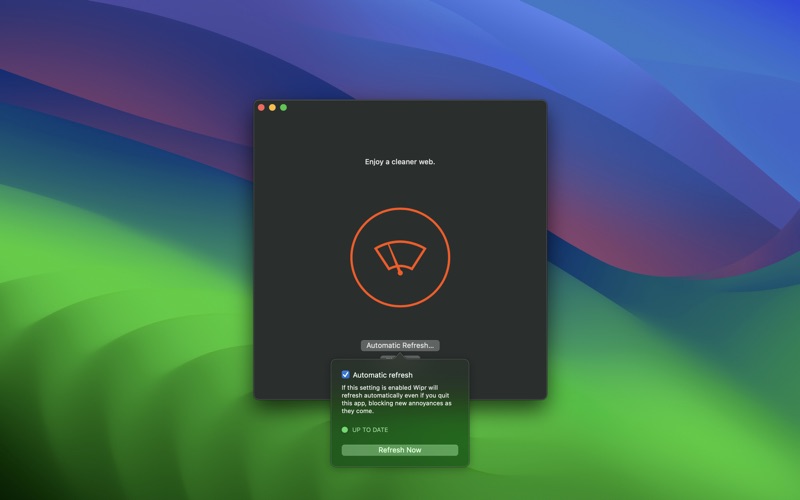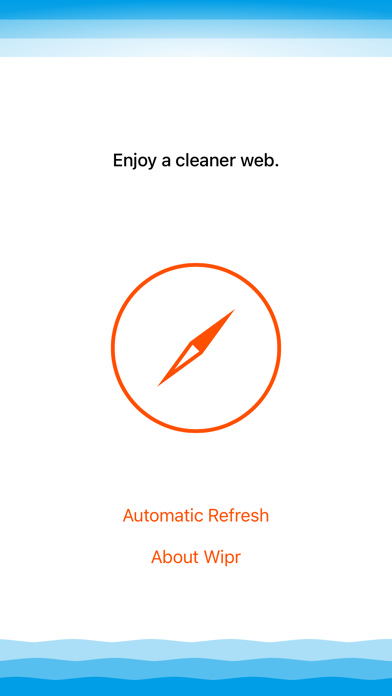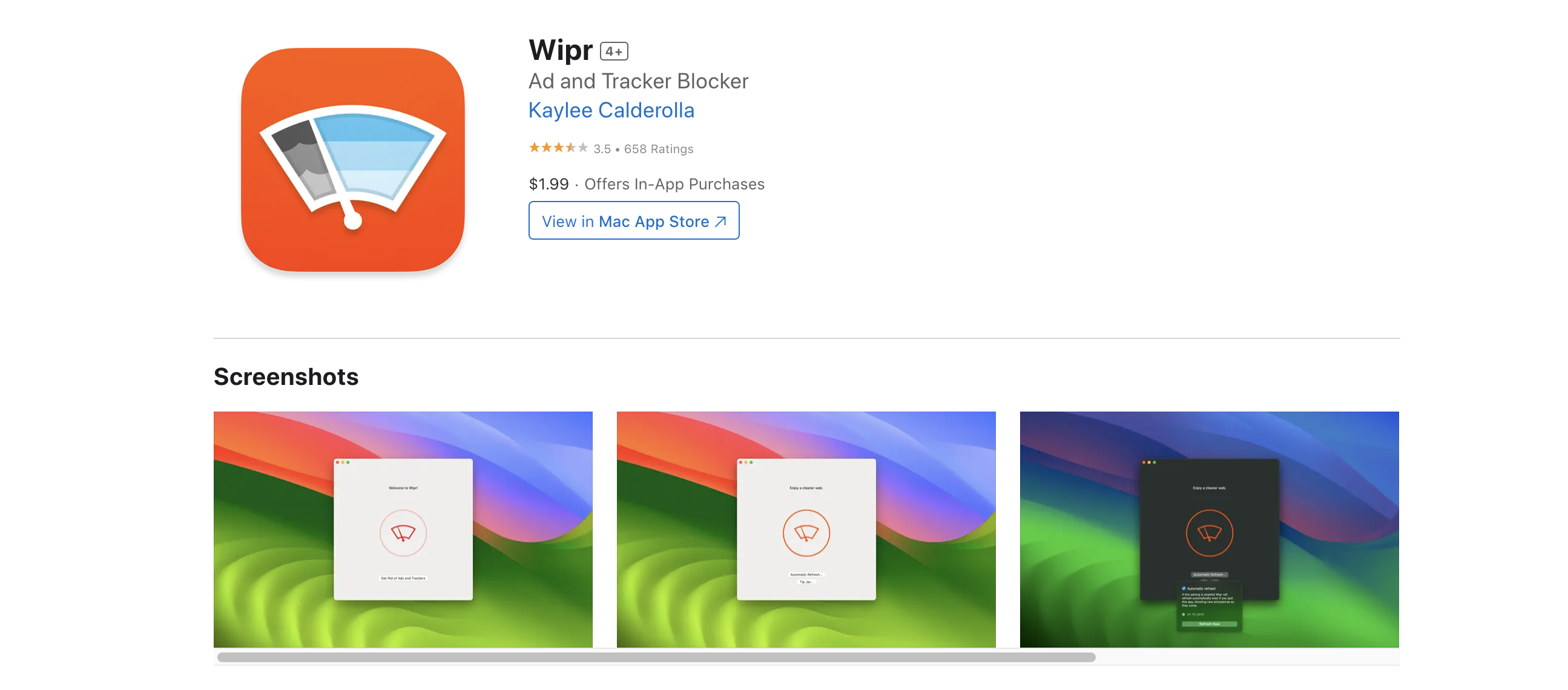TechRadar Verdict
Wipr is an excellent ad-blocking tool for iOS and macOS devices, enabling a fun browsing experience.
Pros
- +
Cost-effective
- +
It blocks YouTube ads
Cons
- -
iOS and macOS only
- -
No complementary security features
Why you can trust TechRadar
Ads are a major problem on the internet today. Many websites have focused too much on ads above content, inadvertently ruining the user experience. For example, you can find websites with half ads and half content, making them annoying to scroll through. You might also encounter a website with poorly placed ads covering valuable content.
Fortunately, there’s a solution to this pressing issue: ad blockers. These tools disable ads from their roots and let you surf the web without encountering obnoxious ads. Wipr is one of the best ad-blocking solutions for iOS and macOS users, and we’re reviewing it to help you decide whether it’s worth using. We’ll dive into its features, pricing, customer support, and other criteria to determine if it’s a suitable solution for you.
Wipr: Plans and Pricing
Wipr is a very cost-effective solution. It has only one pricing structure: a $1.99 one-time fee. There are no upgrade options apart from the one-time purchase, but you can tip the developer if you appreciate the app.
One developer currently maintains this app, and its simple structure means it doesn’t take much funds to run. Wipr does one thing and does it excellently: blocking ads. There’s no free plan, but the low one-time fee saves you a lot in the long run, unlike other competitors that demand monthly or annual fees.

Wipr: Features
Wipr focuses on one thing: blocking ads on the Safari web browser. This app only works for Apple devices (iPhones, iPads and Mac laptops or desktops). Wipr blocks ads and makes your browsing experience less disruptive. We tested it extensively and were pleased to discover it even blocked YouTube ads, allowing us to watch long videos without annoying breaks.
This app also blocks website trackers from monitoring your Safari browsing activity. Likewise, it blocks those repetitive EU cookies and GDPR notices asking for your consent to proceed.
However, Wipr only blocks YouTube ads if you watch videos on the Safari browser. Apple doesn't give apps permission to alter other apps, so Wipr can't block ads if you're using the native YouTube app on your iPhone, iPad, or Mac PC.
Wipr blocks third-party cookies, but some websites need these cookies to function correctly. For example, without cookies, you’ll have to log in every time you visit a locked webpage instead of just logging in once and getting remembered for a long time. To solve this issue, you can whitelist specific sites on Safari to accept cookies from despite Wipr being enabled. You should whitelist trusted websites you use frequently, e.g., your email and social media platforms.
Wipr’s ad-blocking technology is based on a frequently updated blocklist. The platform maintains a database of domains that serve ads, which is updated continuously to keep up with rapid changes. Wipr reviews your browsing requests and blocks any request for an ad-linked domain, ensuring you don't see intrusive ads. The company says it updates its database twice a week.
When testing Wipr, we observed that it didn’t slow the browsing experience like many other ad-blockers. It’s normal to expect browsing to become slower when an ad blocker reviews every request. However, Wipr takes advantage of Apple's developer features that let apps dictate content-blocking rules for Safari once you open the browser. The browsing speed is unaffected because Safari knows the rules in advance and doesn't repeatedly consult Wipr during loading.
Besides, ads take considerable bandwidth. Blocking them actually improves your browsing speed, making your experience more enjoyable. Wipr works well for English users and supports many other languages, including French, German, Greek, Korean, and Chinese.

Wipr: Interface and In-Use
Wipr offers an interface that’s noticeably easy to navigate. The app is designed in a way any layperson can understand. It doesn’t have many features, so there’s no complexity to navigate. Just download and install Wipr, and you can toggle its ad-blocking feature on or off anytime.
We found it odd that Wipr doesn’t have a dedicated website for customers to visit. You can only find the app listings on the Apple and Mac App Stores. However, the lack of a website makes sense, given Wipr’s low cost and, consequently, its developer’s need for minimal hosting expenses.
Wipr has a minimal, uncluttered interface you’ll likely enjoy navigating. You can switch the interface between dark and light mode at will.
Wipr: Customer Support
Wipr doesn’t offer much in this criterion. There’s an option to contact the developer, but it might take long to receive a reply, or if at all. With its very low cost, it’s understandable that Wipr doesn’t invest much in customer support. Users are trading affordability for lesser support and help.
However, if you need help with any issue on the Wipr app, you can post on IT forums or IT-related Reddit subs. Wipr has many fans in the technical community, making them willing to help users.
Wipr: The Competition
The ad-blocking sector is intensely competitive. There’s no shortage of free or paid ad-blocking tools for different devices and browsers. We'd like to highlight Adblock Plus and AdLock as the two main alternatives to Wipr.
Like Wipr, these two alternatives remove ads to make your browsing experience smoother. They shine over Wipr by being compatible with many browsers, unlike Wipr, which is limited to Safari. However, Wipr is much more affordable than these alternatives.
Wipr: Final Verdict
Wipr is an effective ad-blocking tool for Apple device users. It detects and removes ads effectively, making your browsing experience faster and more enjoyable. The drawback is that Wipr only works for iOS and macOS users and on the Safari browser. There’s no version for other browsers and operating systems.
- We've listed the best adblockers
Stefan has always been a lover of tech. He graduated with an MSc in geological engineering but soon discovered he had a knack for writing instead. So he decided to combine his newfound and life-long passions to become a technology writer. As a freelance content writer, Stefan can break down complex technological topics, making them easily digestible for the lay audience.

